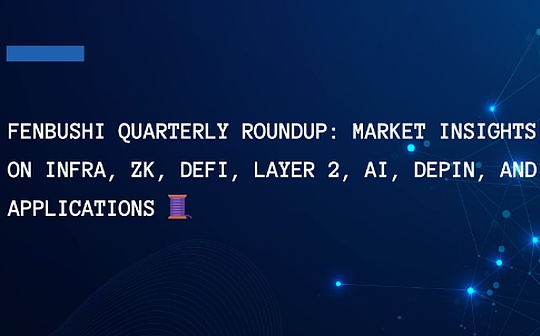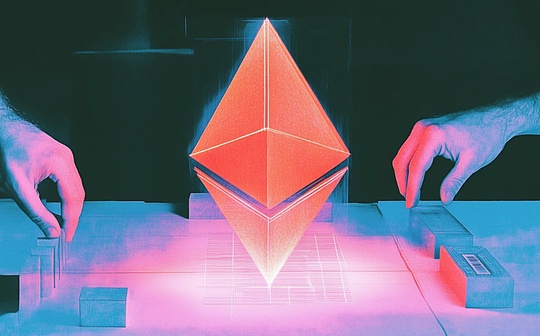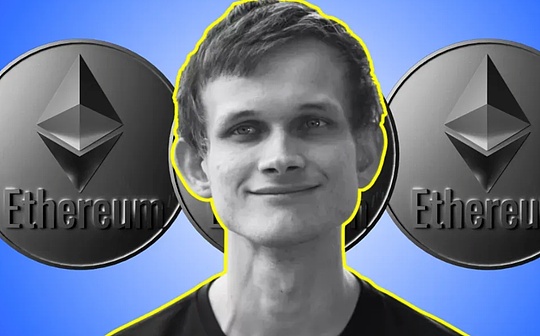
Author: Distributed Capital; Translation: 0xjs@Bitchain Vision
Ethereum and Rollup Infrastructure
With the cooling of blobspace and the decline of gas peaks associated with blobs, the future of blobspace has emerged, attracting market attention.
While block space provides marginal benefits for searchers and builders in the future due to the additional computational overhead associated with future block/gas pricing and subsequent delay competition, blobspace may provide more rationality for Rollup sorters and full nodes in the futureUse cases.
At least for the time being, the sorter is less latency-sensitive and can batch settle multiple L2 blocks to amortize gas costs.Therefore, they can use blobspace futures to hedge their blob gas costs.However, there are some problems.
Blobspace is still in its very early stages, and the market dynamics of blobs can change dramatically as the number of blobs per block increases (up to 256 blobs per block).
In addition, depending on the market situation, there may be a lack of counterparties willing to short blobspace, as this will also indirectly short ETH.Nevertheless, this is an interesting proposal that deserves further research and exploration.
Another area that sparked widespread discussion is Ethereum’s handling of MEVs through PBS.Some researchers expressed frustration at the growing negative impact of MEV on the Eth base layer, such as timed gaming, builder/relay centralization, and relay dependency.
This begs the question: “Is PBS good or bad?” This discussion usually concludes that PBS is just a trade-off made by Ethereum to protect its core protocols from centralized forces, although itIt will still lead to a certain degree of pledge centralization.
More dApps must understand the underlying transaction processing process to protect themselves from negative effects.Just as Ethereum adopts PBS, dApps should also take a method to build applications to protect their users from the negative externalities of the underlying MEV.
DeFi
LRTfi and restaking products have received widespread attention from the community.While the restaking sector is still in its infancy, the market has shown an ongoing demand to seek more profits based on ETH.
As an extension of this trend, native earnings have also become a popular strategy for liquidity in new project launch protocols, e.g.Ethena.As the DeFi sector continues to heat up, more forms of earnings assets are expected to appear.
Layer 2
Although Layer 2 solutions are emerging one after another, the Layer 2 pattern has become relatively stable. Whether it is OP Rollups, ZK Rollups or other Layer 2 solutions, users’ understanding of the technology roadmap is still relatively vague.
Although zk-rollups have been hyped before, the current situation is that Arbitrum outperforms Solana in daily active users, the zkrollup L2 chain is disappointing from both the ecosystem and total lock value (TVL) perspective.
Therefore, it seems that the leaders in the Layer 2 field are Arbitrum, Optimistic Rollups and Base.Whether the zk-rollup-based solution can catch up is still uncertain, depending on how the team manages ecosystem operations and future token issuances.
An interesting observation iszklink, which positioned itself as a universal Layer 3 solution.In a short period of time, zklink’s TVL has approached $1 billion, which seems to prove the existence of liquidity fragmentation caused by multiple Layer 2 solutions.
Users are looking for a chain that integrates decentralized liquidity while ensuring security inherited from Ethereum and high performance of Layer 2.Combined with zk’s security technology, zklink seems to offer a very compelling solution.
AI & DePin
In the past quarter, competition in the AI & DePin market has intensified.In the field of AI, the easiest subfield in Web3 is decentralized computing power, and the most representative project isIO.net, will be launched soon.
In addition to IO.net, similar projects have also received financing recently.IO.net is relatively simple in technology and lacks encryption or OP proof solutions for results verification.Lower technical complexity allows for the fastest startup time.
In the DePin field, the second largest public chainIoTeXCompleted a $50 million financing, and the newly launched DePin public chainPeaqIt raised $20 million through Coinlist.
However, the quality of the DePin ecological projects carried by IoTeX and Peaq as public chains is relatively average compared to Solana. The market is currently in a stage where the underlying infrastructure is relatively mature, but the upper-level high-quality assets and applications are scarce.
app
Recently, many applications have chosen to develop their own application chains, mainly because the infrastructure sector generally has higher valuations than applications.This strategy is understandable and economically beneficial to the project.
But it should be emphasized that the success of a project depends on the project itself, not the type.Without substantial content and a solid user base, the application chain may become a ghost chain or an island.
Historically, applications have grown significantly in the middle of the bull market, with greater potential than infrastructure.Patience and continuous construction are crucial to the application team.Applications are the front-end of consumers and are crucial for users to get started during the bull market.Eventually, people’s attention will return to the app
ZK
Thanks to the open source nature of cryptography research, ZK’s innovation speed has been significantly accelerated.Plonky3Release andBiniusThe development has prompted more projects to experiment and iterate on existing ZK infrastructure.
SuccinctThe launch of SP1, a RiscV zkVM built on RiscZero, has injected new vitality into the market.RiscZero has stepped up its marketing and ecosystem.Both projects are expected to have exciting developments and feature announcements, which could lead to the formation of the zkVM market.








